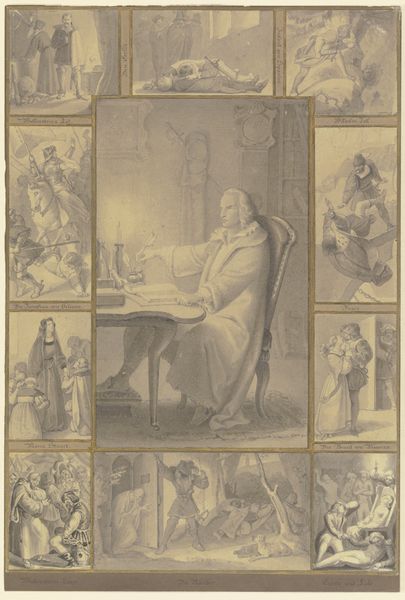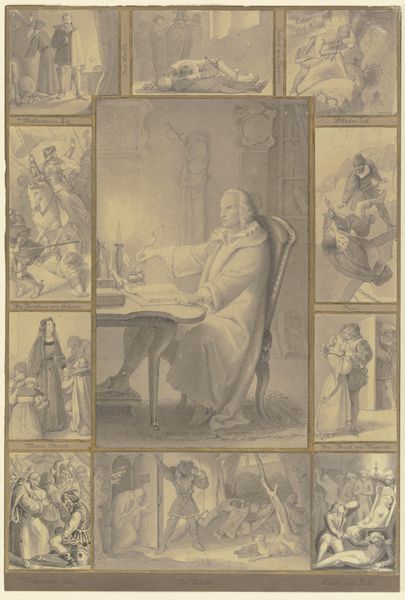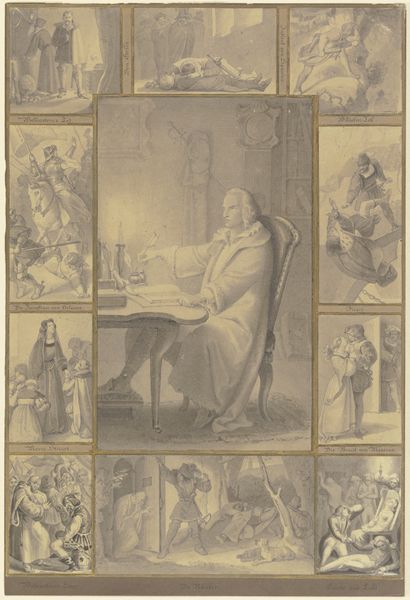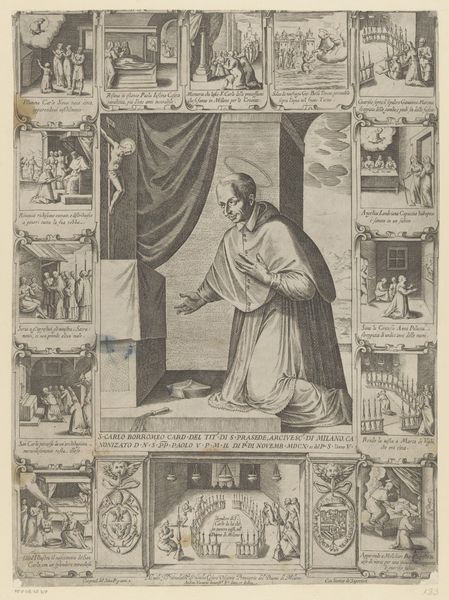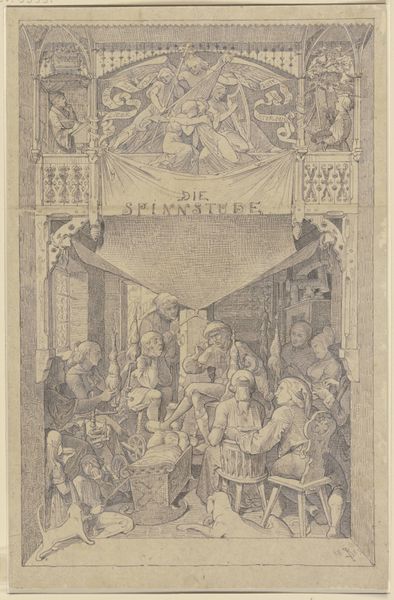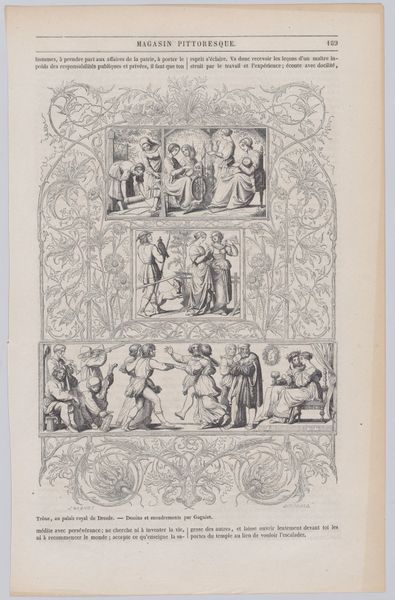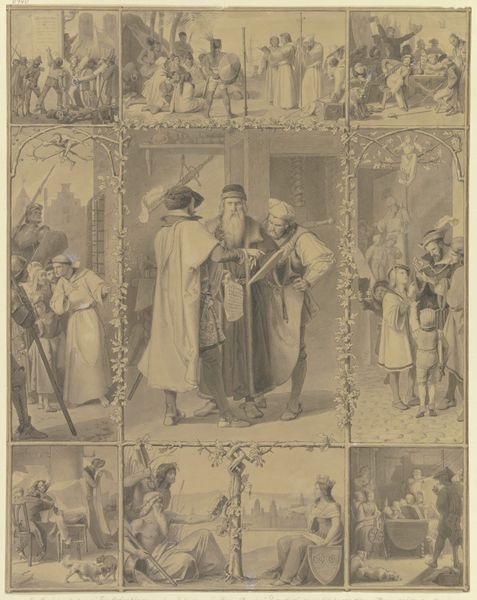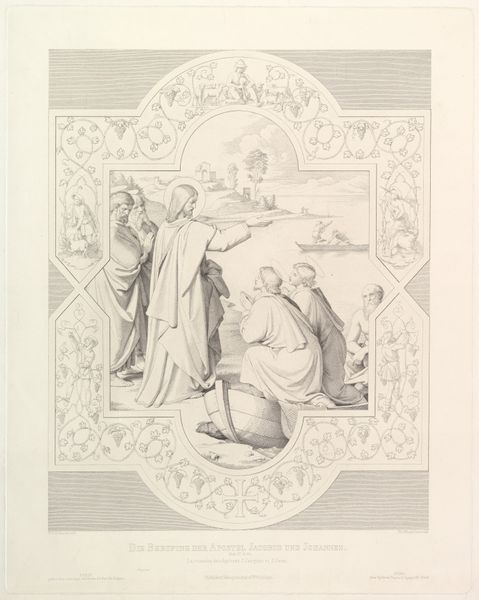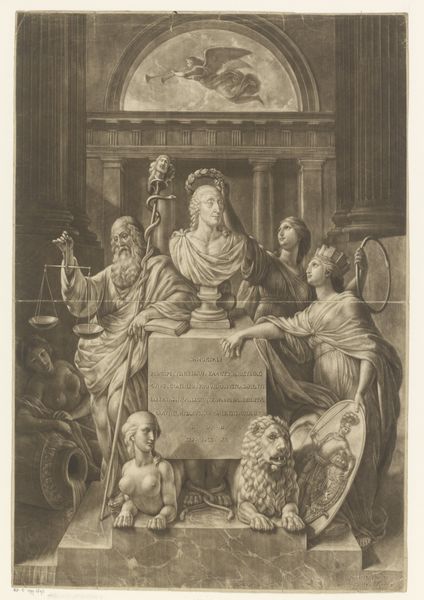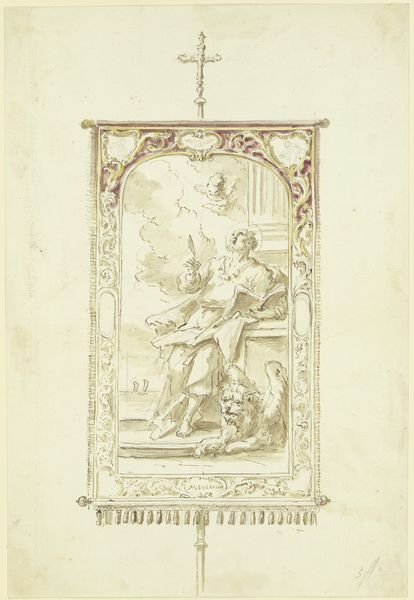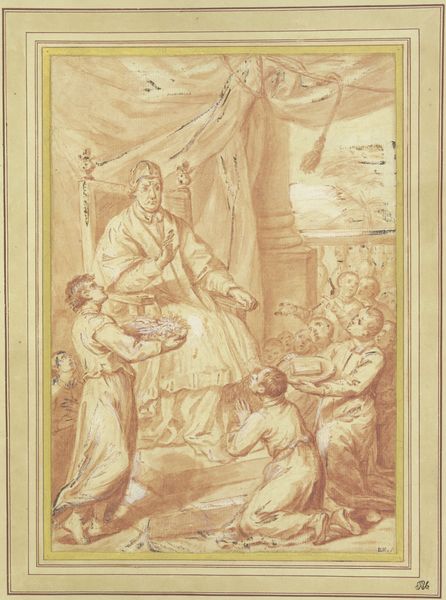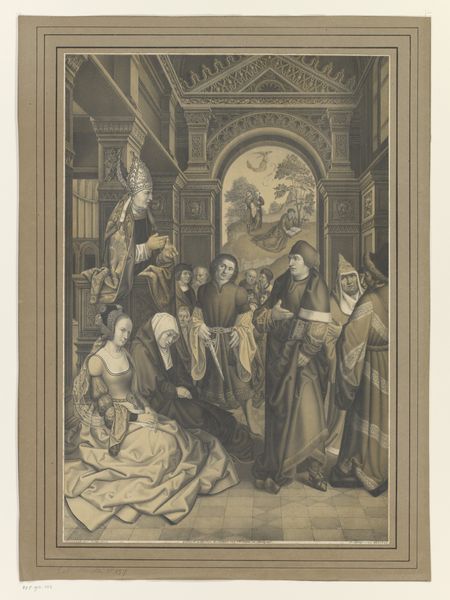
drawing, paper, ink
#
drawing
#
paper
#
ink
#
german
#
romanticism
#
watercolour illustration
#
history-painting
Copyright: Public Domain
Editor: Here we have Alfred Rethel's drawing in ink and paper, titled *Joan of Arc.* It feels almost like a graphic novel page, with panels surrounding a central figure. There's a solemn tone to it, but the central figure, writing at a desk, offers a point of focus. What do you make of it? Curator: Well, for me, it sings a ballad of Romanticism’s soul-searching. It is interesting how Rethel weaves this historical narrative, no? He situates this solitary writer as the anchor for Joan's epic, his work lit by the candlelight in his hand. Is he penning her tale, do you think? Or, perhaps, reinterpreting the facts into a more compelling heroic drama. What scenes do you notice specifically in those peripheral panels? Editor: I see battles, trials, executions... key moments of her life and death, almost like stages in a play. The panels give the central portrait so much context! It looks like he's capturing more than a biography, but something emotionally true. Curator: Precisely! The muted palette enhances this sense of distant, hallowed memory. Rethel, with that central writer figure, asks us: How *do* we craft a legend? Does historical fact bend in the face of grander artistic truth? Editor: So it's not just about *what* happened, but *how* we remember it and transform it into art. Curator: Exactly. He is in conversation with memory and how we chose what matters about Joan's legacy, isn’t he? He chose specific snapshots in the same way all great historians and playwrights must chose what informs the overarching point of view. Editor: It's like Rethel is not just showing us Joan of Arc, but showing us how history and memory play with each other. It has layers. Curator: Layers upon layers! I believe this ink and paper isn’t just art but reflection, a whispered debate about art and truth!
Comments
No comments
Be the first to comment and join the conversation on the ultimate creative platform.


